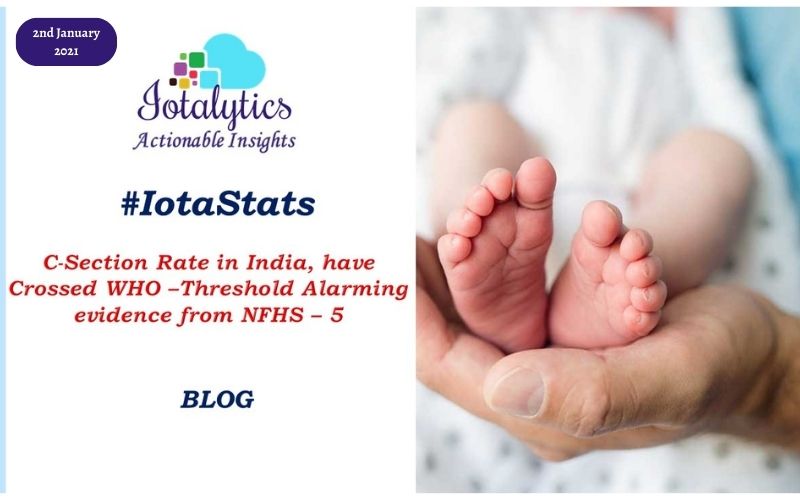
C-Section Rate in India, have Crossed WHO –Threshold Alarming evidence from NFHS – 5
September 29, 2024, IotaStats
Contributors : Jhumki Kundu, Ajit Kumar Jaiswal
The 2019-20 National Family Health Survey-5 phase one covered 17 states and 5 Union Territories of India, and the survey work of the remaining 14 States/UTs is under progress and is delayed due to the COVID-19 pandemic. The reduction in maternal and neonatal mortality and complications can be reduced with the increase in access to caesarean section. The 2015-16 NFHS found that the 17% of the live births in the five years preceding the survey were delivered by caesarean section. From the 2019-20 estimates, it is seen that states like Nagaland, Bihar and Meghalaya are in the lower quartile with less than 10% of the deliveries happening by caesarean section. Whereas states of Andhra Pradesh and Telangana have the highest percentage among the 22 States/UTs with over 42% and 61% respectively. Also, a significant change can be seen in the change in percentage from the previous round of NFHS. There has been an increase in the deliveries by caesarean section in most of the states, some with a huge jump of 21% in Ladakh, and minute changes of 0.5% in Nagaland and Meghalaya. Lakshadweep and Mizoram have had a decrease in the percentage of live birth delivery by caesarean section.
Comparison between the percentage of caesarean
section births in India during 2015-16 and 2019-20 is difficult because of the
lack of estimates from the remaining states. But looking at the average
percentage for India while only including the 22 states, there is an increase
in the live birth caesarean deliveries by 5% from NFHS 4 to NFHS 5. Data for 17
States/UTs are still needed to be included to get a better understanding of the
level of Caesarean section deliveries in India today. The overall estimate in
NFHS 4 was 17% and the average estimate of 2015-16 data by only including the
corresponding 22 states whose data is available in NFHS 5 is around 23%. And,
so if this trend should continue, the overall estimate for India of the live
births delivery by caesarean section can take a dip when the estimates for the
remaining states are included in the 2019-20 data.
